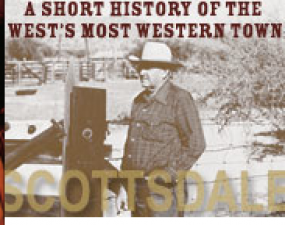 North Scottsdale Homes for Sale has several buildings still intact that represent the early development of this community. Scottsdale began as a small farming town when 40 acres of land was sub-divided into lots in 1894 and was named to honor United States Army Chaplain Winfield Scott, who brought most of the early settlers to the community. The following is a self-guided tour that you can use as your map should you choose to visit.
North Scottsdale Homes for Sale has several buildings still intact that represent the early development of this community. Scottsdale began as a small farming town when 40 acres of land was sub-divided into lots in 1894 and was named to honor United States Army Chaplain Winfield Scott, who brought most of the early settlers to the community. The following is a self-guided tour that you can use as your map should you choose to visit.
1. The Little Red Schoolhouse-This is currently the home of the Scottsdale Historical Museum located on the Scottsdale Civic Center Mall. The schoolhouse was built in 1909 at a cost of $4,500. It had 2 classrooms for grades 1-8, and it was also used as a church and for town meetings. Later in the 1920’s this building served as a community center for Mexican laborers who settled here to work in the cotton fields surrounding the Scottsdale area.
2. Rusty Spur Saloon– On the south side of Main Street, the Farmer’s State Bank of Scottsdale opened in 1921 where the Rusty Spur Saloon is standing today. During the Depression the bank closed, but the vault is still there and holds liquor instead of money. Definitely worth a visit.
 3. Saba’s Western Wear– A mainstay for any cowboy or cowgirl, Saba’s Western Wear on the northwest corner of Brown Avenue and Main Street was built in 1921 and was originally a drug store. In 1947 the Saba family of Chandler bought the property and built a rustic western façade in front of the red brick building, where it still stands today.
3. Saba’s Western Wear– A mainstay for any cowboy or cowgirl, Saba’s Western Wear on the northwest corner of Brown Avenue and Main Street was built in 1921 and was originally a drug store. In 1947 the Saba family of Chandler bought the property and built a rustic western façade in front of the red brick building, where it still stands today.
4. Sugar Bowl– On the southeast corner of First Avenue and Scottsdale Road, the Sugar Bowl is a classic favorite for locals and visitors alike. Originally constructed in 1950, the building first served as a general store. In 1958 it was converted into an ice cream parlor in response to the growing tourist trade and the need for a family oriented restaurant.
5. Our Lady of Perpetual Help Mission Church– This little white building on the southeast corner of First Street and Brown Avenue was built in 1933 by residents of the Mexican settlement. The building’s 14,000 adobe blocks, each weighing 50 pounds, was made right on site. For many years this little church was the only Catholic Church in Scottsdale.
These are just a few highlights of the historical buildings in Scottsdale. There are many historic sites and neighborhoods as well. For more information, be sure to visit the Scottsdale Historical Museum.




